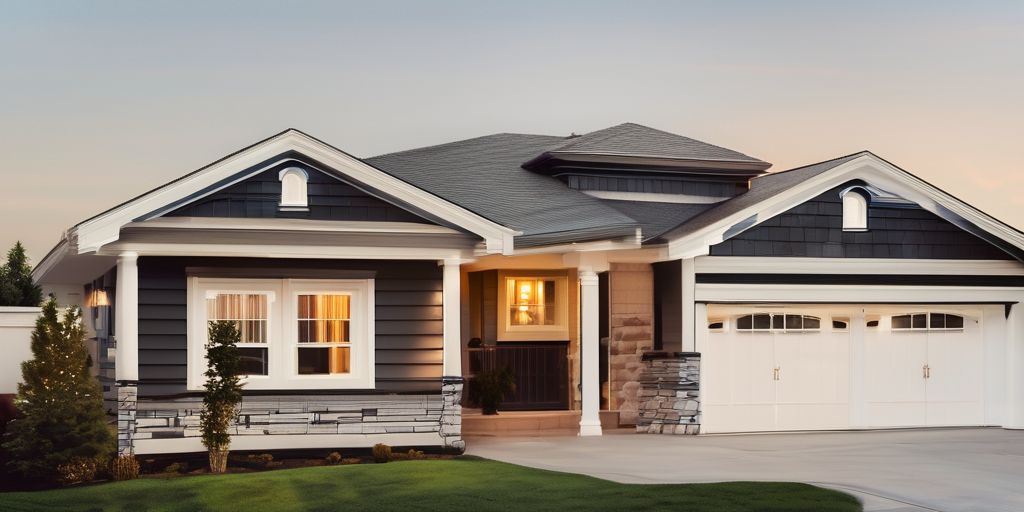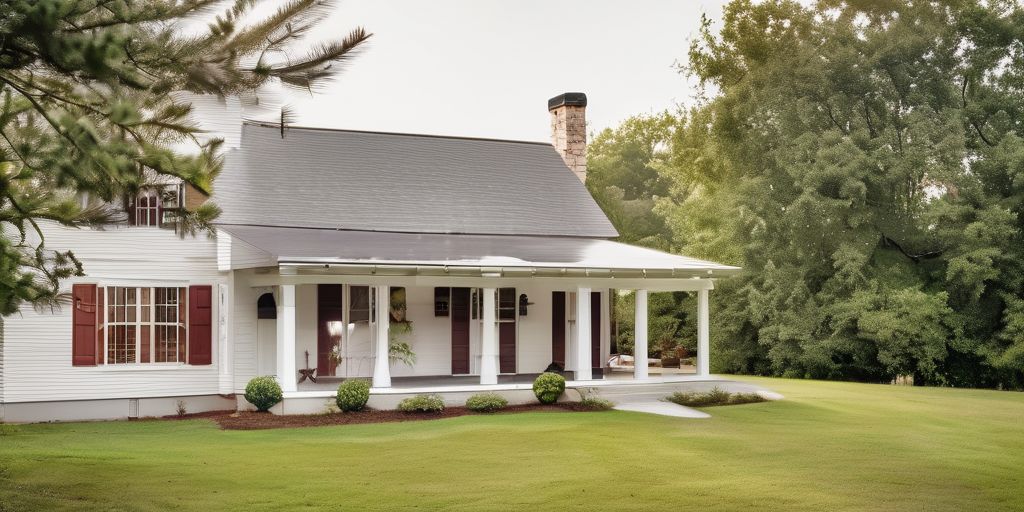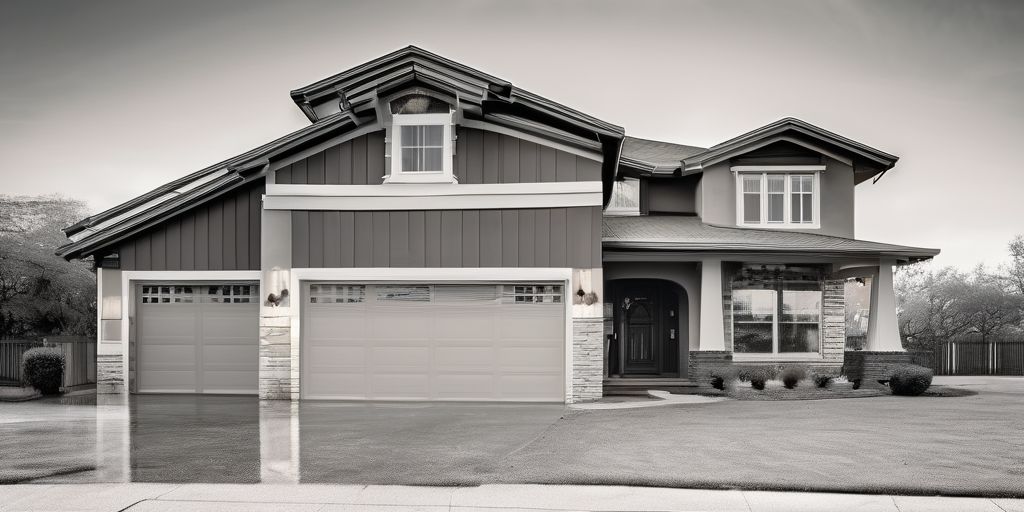Spray painting outdoors in Niagara Falls can be a fun and rewarding project, but it requires careful planning and the right techniques. Whether you’re freshening up a fence or giving new life to furniture, knowing how to approach your spray painting tasks will help you achieve great results. This article will guide you through essential methods for successful outdoor spray painting in this unique environment.
Key Takeaways
- Choose spray paint based on local weather conditions.
- Prepare surfaces properly for better paint adhesion.
- Use thin and even coats for a smooth finish.
- Wear protective gear to stay safe while painting.
- Regularly maintain painted surfaces to extend their lifespan.
Choosing the Right Spray Paint for Niagara Falls Weather
When it comes to outdoor spray painting in Niagara Falls, selecting the right paint is crucial. The local weather can be unpredictable, so understanding how it affects your project is essential.
Understanding Temperature Fluctuations
- Temperature Range: Choose paint that can handle both hot summers and cold winters. Niagara Falls experiences a wide range of temperatures.
- Drying Time: Be aware that extreme temperatures can affect how quickly the paint dries. Too hot or too cold can lead to poor adhesion.
- Recommended Range: Aim for temperatures between 50°F and 85°F for optimal results.
Dealing with High Humidity Levels
- Moisture Resistance: Look for paints that are specifically designed to resist moisture. High humidity can lead to issues like peeling or bubbling.
- Drying Time: Humid conditions can slow down drying time, so plan accordingly.
- Ideal Conditions: Try to paint when humidity levels are below 70% for the best results.
Selecting Water-Resistant Paints
- Waterproof Options: Given the frequent rain and snow in the area, consider using water-resistant paints to protect your surfaces.
- Longevity: Water-resistant paints help maintain the color and finish over time, especially in a place like Niagara Falls where weather can be harsh.
- Local Landmarks: Just like the iconic Niagara Falls itself, your painted surfaces should withstand the test of time and elements.
By choosing the right spray paint for the weather conditions in Niagara Falls, you can ensure a successful and long-lasting outdoor spray painting project.
Preparing Surfaces for Optimal Spray Painting
Before you start spray painting outdoors, it’s essential to prepare the surfaces properly. This step can make a big difference in the final look of your project. A well-prepared surface leads to a smoother finish. Here are some key steps to follow:
Cleaning and Sanding Techniques
- Remove Dirt and Grease: Start by cleaning the surface with soap and water to eliminate any dirt or grease.
- Sand the Surface: Use sandpaper to smooth out rough areas and remove any old paint. This helps the new paint stick better.
- Dry Thoroughly: Ensure the surface is completely dry before applying paint to avoid issues with adhesion.
Using Primers for Better Adhesion
- Choose the Right Primer: Select a primer that suits the material you are painting, whether it’s wood, metal, or plastic.
- Apply Evenly: Use a brush or roller to apply a thin, even coat of primer. This creates a good base for the spray paint.
- Let it Dry: Allow the primer to dry completely before moving on to the spray paint.
Masking and Taping for Precision
- Use Painter’s Tape: Apply painter’s tape around edges and areas you don’t want to paint. This helps create clean lines.
- Cover Surrounding Areas: Use drop cloths or plastic sheets to protect nearby surfaces from overspray.
- Check for Gaps: Ensure there are no gaps in the tape or coverings to prevent paint from seeping through.
Proper surface preparation is crucial for achieving a professional-looking finish. Taking the time to clean, prime, and mask can save you from headaches later on.
By following these steps, you can set yourself up for success in your outdoor spray painting projects, whether you’re near the stunning views of Niagara Falls or in your own backyard!
Mastering Spray Painting Techniques
Achieving a Smooth Finish
To get a smooth finish when spray painting, follow these essential tips:
- Maintain Distance: Keep the spray can about 6 to 8 inches from the surface. This helps the paint spread evenly and prevents drips.
- Use a Steady Motion: Spray in a smooth, sweeping motion to cover the area without leaving streaks.
- Avoid Overlapping: Try not to spray over the same area too many times to prevent uneven coverage.
Applying Thin and Even Coats
Applying thin and even coats is crucial for a professional look. Here’s how:
- Start Light: Begin with a light coat and let it dry before adding more.
- Build Gradually: Apply multiple thin layers instead of one thick layer to avoid drips.
- Check for Coverage: After each coat, inspect the surface to ensure even coverage.
Handling Corners and Edges
Corners and edges can be tricky, but with the right approach, you can master them:
- Use a Masking Tape: Tape off areas you don’t want to paint for clean lines.
- Angle the Can: Adjust the angle of the spray can to reach tight spots without overspray.
- Practice Patience: Allow each coat to dry completely before moving on to the next to avoid smudging.
Remember, mastering these techniques can save time and enhance results in various projects. Whether you’re painting a fence near the beautiful Niagara Falls or refreshing your outdoor furniture, these tips will help you achieve a great finish!
Safety Measures for Outdoor Spray Painting
When engaging in outdoor spray painting, especially in a vibrant area like Niagara Falls, safety should always come first. Here are some essential safety measures to consider:
Wearing Protective Gear
- Safety glasses: Protect your eyes from paint splatters and harmful particles.
- Dust masks or respirators: These help filter out harmful fumes and particles, ensuring you breathe safely.
- Non-slip shoes: A sturdy pair of shoes can prevent slips, especially on uneven surfaces.
- Gloves: Keep your skin safe from paint and chemicals.
Ensuring Proper Ventilation
- Always work in a well-ventilated area to reduce inhalation of fumes.
- If indoors, open windows and use fans to increase airflow.
- Avoid painting in enclosed spaces without proper ventilation, as this can lead to health risks.
Disposing of Paint and Cans Responsibly
- Follow local guidelines for disposing of paint and empty cans. Many areas have specific rules for hazardous waste.
- Empty cans can often be recycled, while partially filled cans may need special disposal.
- Consider eco-friendly options to minimize environmental impact.
Remember, taking these precautions not only protects you but also helps maintain the beauty of the surroundings, like the stunning views of the Niagara Falls area.
By following these safety measures, you can enjoy your outdoor spray painting projects while keeping yourself and the environment safe.
Maintaining and Extending the Lifespan of Painted Surfaces
To keep your spray-painted surfaces looking great for a long time, regular care is key. Here are some important steps to follow:
Regular Cleaning and Inspection
- Clean the surface regularly: Use a soft cloth or sponge with mild soap and water to remove dirt and dust. This helps keep the paint vibrant.
- Inspect for damage: Check for any chipping or fading. Addressing these issues early can prevent bigger problems later.
- Avoid harsh chemicals: Stick to gentle cleaners to avoid damaging the paint.
Touching Up and Repairing Damages
- Assess the area needing touch-up. Clean and sand if necessary.
- Choose a spray paint that matches the original color. This ensures a seamless look.
- Apply the touch-up paint in thin, even coats to avoid drips.
Applying Protective Sealants
- After painting, consider applying a protective sealant. This helps guard against moisture and UV rays.
- Clean the surface before applying the sealant to ensure it sticks well.
- Follow the instructions on the sealant for the best results.
Remember, taking care of your painted surfaces not only keeps them looking good but also extends their lifespan. Enjoy the beauty of your outdoor projects, perhaps while admiring the stunning views of the Niagara Falls!
Timing Your Spray Painting Projects
Best Seasons for Spray Painting
When planning your outdoor spray painting projects, consider the seasons. The best times are:
- Early summer: Warm temperatures and low humidity create ideal conditions.
- Fall: Mild weather helps paint dry evenly and prevents issues.
- Avoid winter: Cold temperatures can lead to poor adhesion and longer drying times.
Adapting to Sudden Weather Changes
Weather can be unpredictable, especially in areas like Niagara Falls. Here are some tips to adapt:
- Check forecasts: Always look at the weather report before starting.
- Have a backup plan: Be ready to postpone if rain or strong winds are expected.
- Use tarps: Protect your work area from sudden rain.
Scheduling and Planning Ahead
Planning is key to a successful spray painting project. Consider these steps:
- Set a timeline: Determine how long each phase will take.
- Gather materials: Ensure you have everything ready before starting.
- Allow drying time: Factor in drying times between coats to avoid rushing.
Remember, proper timing can make all the difference in achieving a smooth and professional finish.
Benefits of Hiring Professional Spray Painters
When it comes to outdoor spray painting, hiring a professional can make a significant difference. Here are some key benefits:
Expertise and Experience
- Professional painters have the skills to handle various surfaces and conditions.
- They understand the nuances of exterior painting, ensuring a high-quality finish.
- Their experience allows them to anticipate challenges, especially in areas like Niagara Falls where weather can be unpredictable.
Access to High-Quality Materials
- Professionals use top-notch materials that are durable and suitable for outdoor conditions.
- They can recommend the best types of paint for specific surfaces, ensuring longevity.
- Their knowledge helps in selecting paints that resist moisture, which is crucial in humid areas.
Time and Cost Efficiency
- Hiring professionals can save you time, as they work quickly and efficiently.
- They can complete projects faster without compromising on quality, allowing you to enjoy your newly painted surfaces sooner.
- This efficiency can also lead to cost savings in the long run, as high-quality work reduces the need for frequent touch-ups.
In summary, hiring professional spray painters not only enhances the quality of your project but also ensures that it is completed in a timely and cost-effective manner.
By considering these benefits, you can make an informed decision about your outdoor spray painting needs.
Hiring professional spray painters can truly transform your home. They bring expertise and the right tools to ensure a smooth, long-lasting finish that DIY efforts often miss. Instead of settling for a dull exterior or spending a fortune on new siding, consider a fresh coat of paint. It’s a smart, cost-effective way to enhance your home’s appeal. Ready to give your home a makeover? Visit our website for a free estimate today!
Conclusion
To wrap things up, outdoor spray painting in Niagara Falls can be a fun and rewarding project if you follow the right steps. Using a good spray gun can help you reach tricky spots easily, and waiting for sales on paint can save you money. Preparing the wood properly, like cleaning it and using the right brushes, makes sure the paint sticks well. By keeping these tips in mind, you can have a successful and enjoyable spray painting experience in Niagara Falls.
Frequently Asked Questions
What kind of spray paint should I use for outdoor projects?
It’s best to pick a high-quality spray paint made for outdoor use. Look for paints that can handle different weather conditions.
How do I prepare the surface before spray painting outside?
Start by cleaning the surface to remove any dirt or dust. You might also need to sand it down for better paint sticking.
What techniques can help me get a smooth finish?
Make sure to spray in thin, even layers and keep the can moving to avoid drips. This will help achieve a nice, smooth look.
What safety gear should I wear when spray painting outdoors?
Always wear goggles to protect your eyes, a mask to avoid inhaling fumes, and gloves to keep paint off your skin.
How can I make my painted surfaces last longer?
Regularly clean the painted areas and check for any damage. Touching up any worn spots quickly can help keep it looking fresh.
When is the best time to spray paint outdoors?
The best time is usually in spring or fall when the weather is mild. Be sure to check the forecast for any sudden changes.





